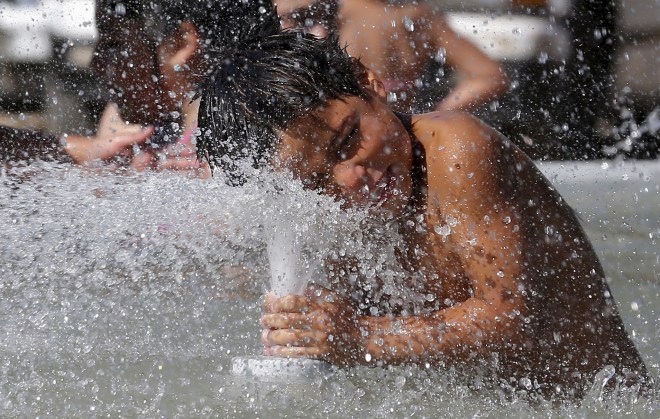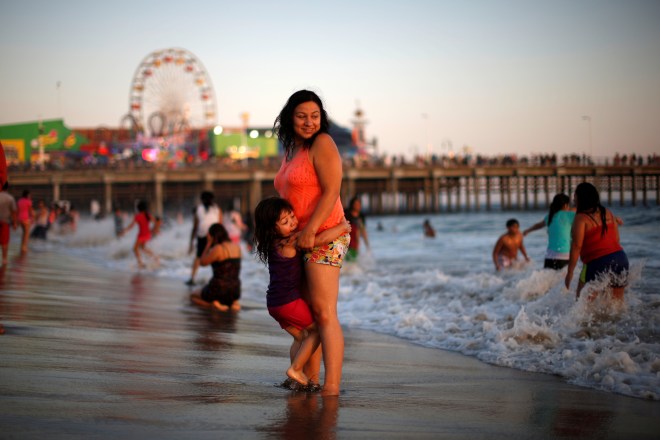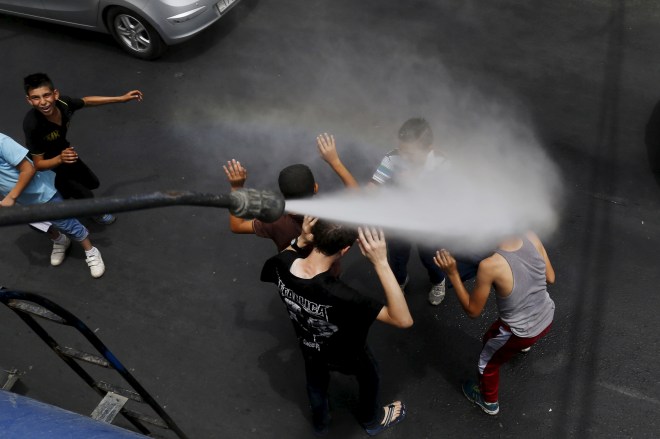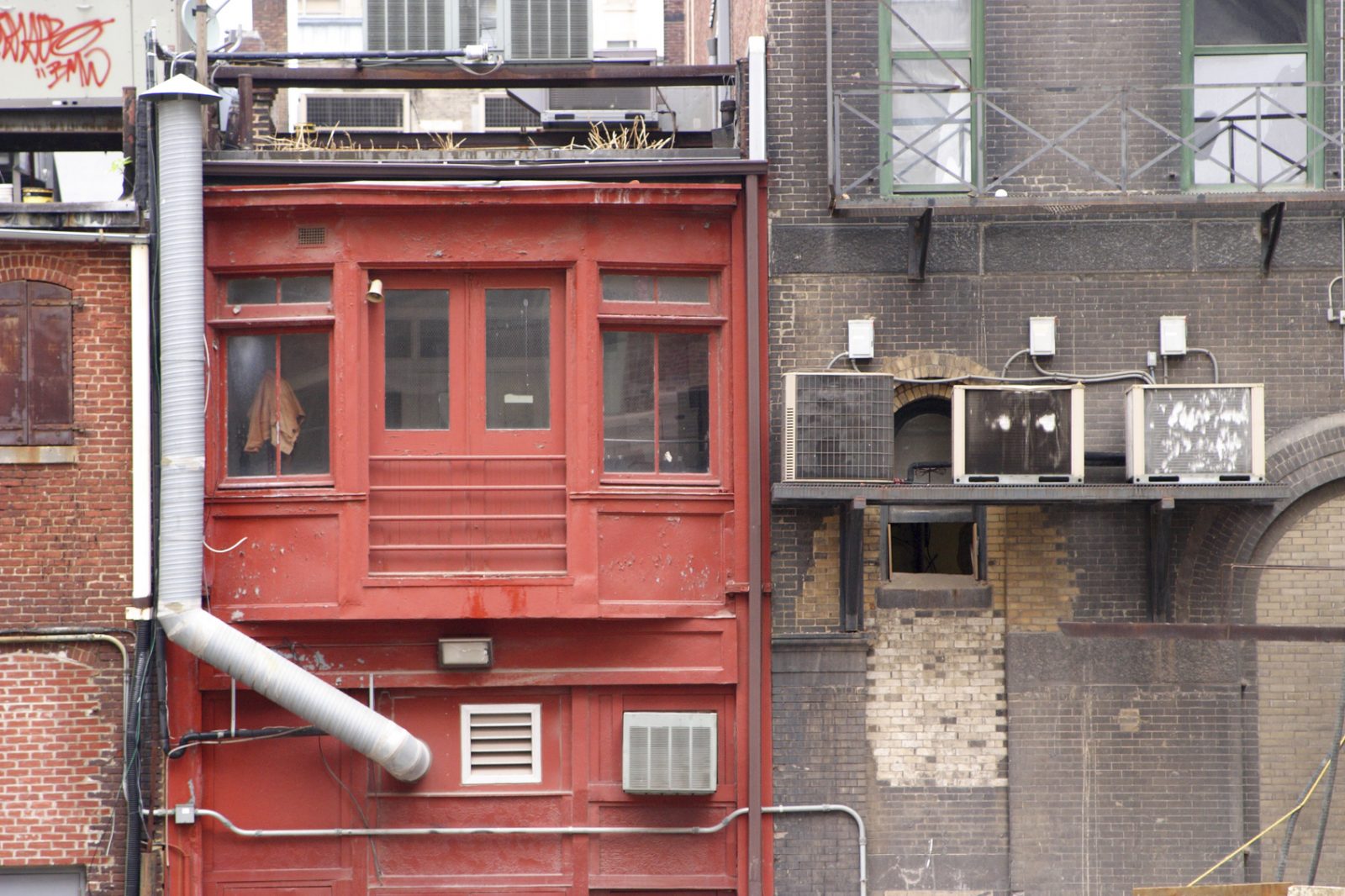Summers in the South are difficult. It’s often beautiful outside, with bright, blue skies and plenty of lush, green vegetation. But it’s also so hot that you can’t really enjoy it. The air is heavy, like you’re constantly being hugged by a sweaty person. So you either stay inside, or you suffer. And it’s easy for most folks to stay inside because nearly everyone has air-conditioning.
At least, until they don’t.
In the summer of 2011, a heat wave seared North America. From the Southwest to the Eastern Seaboard and up into Canada, it was the hottest heat wave in 75 years, hitting an estimated 200 million people. It was also the weekend my air conditioner broke. In Durham, North Carolina, we experienced five triple-digit days in a row. All over the city, air conditioners just couldn’t keep up. From office buildings and grocery stores to coffee shops and movie theaters, the buildings you normally expect to provide sweet relief from the outside just sweltered. Inside my house, the thermostat hit the low 90s, and stayed there — all week.
At first, I thought I could handle it. I didn’t grow up with air-conditioning, so I did what we did when I was kid: I drew the shades and closed the windows during the day, then opened everything up at night to let the cool air in. But even at midnight, my poorly insulated house felt like the inside of a dryer.
[grist-related tag=”air-conditioning” limit=”1″ label=”Chill. Here’s more on AC.”]
To cope, I lay on my living room floor under a ceiling fan and held a frozen washcloth to my wrists and neck. When that didn’t solve the problem, I took cold showers. When my skin started to prune, I stuck my feet in a bag of ice. When the ice melted, I called a friend with working air-conditioning. I spent the rest of the week at her house, never so glad for good friends and good AC.
But this nightmarish experience made me think: What in the hell did people do before air-conditioning?

REUTERS/Rodrigo Garrido
A very short history of cooling
Primitive air-cooling systems have been around for eons, from ancient Rome, where the wealthy cooled their homes by circulating water between walls, to 2nd-century China, where the first fan large enough to cool a room was developed (it was powered by hand).
The first modern cooling system was invented by John Gorrie, a Florida physician who believed that cold was good for healing. Gorrie had been cooling sickrooms by suspending basins of ice from the ceiling, but the ice had to be imported from the North. It was expensive, difficult to store, and, predictably, prone to melting. Rather than relying on this limited natural resource, Gorrie started experimenting with artificial cooling by using a steam engine to force air through a tank of chilled brine. It worked, and Gorrie was granted a patent for his cooling machine in 1851.
It would, however, be many more decades before air-conditioning as we know it entered the marketplace. Nearly 50 years later, an engineer with the Buffalo Forge heating company in upstate New York named Willis Haviland Carrier was tasked with solving a problem plaguing a Brooklyn printing company: Excess humidity was wrecking the printing process and making work during summer months impossible. And this wasn’t just a problem for printers — from chocolate and pasta to textiles and tobacco, industries around the country just shut down during the hottest months of the year.
Carrier developed a system that pumped air over coils chilled with ammonia and then expelled it with a fan. This both cooled the room and lowered humidity levels. Soon, Carrier’s invention spread from the printing company to other industries. In 1925, a Carrier system was installed at the Rivoli Theater in Times Square, making it the first-ever place where the public could experience the wonder of AC.
Air-conditioning had finally entered the public sphere. But while some very wealthy Americans were able to afford industrial units for their homes, the first system able to cool individual rooms wasn’t developed until 1931, when H.H. Schultz and J.Q. Sherman invented the first window units. Even then, AC was expensive enough to be rare, costing between $10,000 and $50,000 (or $120,000 to $600,000 in today’s dollars). By the middle of the century, only an estimated 10 percent of American households had air-conditioning at home.
After a few more decades, however, air-conditioning would be everywhere: Today, 86 percent of American households have air conditioning. And where America goes, so goes the world — at least when it comes to AC.
Take China. In just 15 years, urban Chinese households went from almost no air-conditioning to almost all air-conditioning. Today, nearly every city dwelling in China has at least one AC unit, and many have more than one. Sales are increasing in India, Indonesia, and Brazil at a rate of 10 to 15 percent per year. In Mexico, where only 13 percent of households currently have AC, rates of ownership are expected to hit 71 to 81 percent by the end of this century. In total, researchers project that the world will install 700 million air conditioners in the next 15 years, and 1.6 billion by 2050.

REUTERS/Lucy Nicholson
The environmental and social costs of AC
AC comes with a host of problems. It is undoubtedly true that air-conditioning saves lives, especially among vulnerable populations like the elderly, but it also comes at a high price — and not just when it comes to your electric bill.
Air-conditioning in the U.S. currently accounts for an estimated 5 percent of our annual energy consumption, and spews about 100 million tons of carbon dioxide into the air each year. The CO2 emissions are bad enough, but air conditioners also contain refrigerants called hydrofluorocarbons (HFCs), another potent greenhouse gas, which can leak out during use, maintenance, and disposal of AC units. In fact, fluorinated gases like HFCs are the most potent and longest lasting of all the greenhouse gases emitted from human activities, and, according to the EPA, emissions have increased a staggering 258 percent since 1990. Currently, world diplomats are working on phasing out HFCs, but it will still take many years to happen.
In the meantime, the massive amount of greenhouse gases we emit to power our air conditioners actually increases our need for air conditioners. As Stan Cox, the author of Losing Our Cool, a definitive history of air-conditioning, told me: “It’s an especially vicious cycle because air conditioning inside makes it even warmer outside.”
The social costs are high, too. AC has fundamentally changed the ways in which we interact with the world and with each other. Today, many Americans move from air-conditioned homes to air-conditioned cars to air-conditioned places of businesses. Instead of going to parks or sitting on porches or jumping in public pools, we stay inside, glimpsing the world only through tightly shut windows.
In 1998, playwright Arthur Miller wrote about living in New York City before air-conditioning: “With a couple of other kids, I would go across 110th to the Park and walk among the hundreds of people, singles and families, who slept on the grass, next to their big alarm clocks, which set up a mild cacophony of the seconds passing, one clock’s ticks syncopating with another’s,” Miller wrote. “Babies cried in the darkness, men’s deep voices murmured, and a woman let out an occasional high laugh beside the lake.”
Those days are long over, replaced by the hum of AC and parks that close after dark.
Phoenix: Then and now
People have always lived in hot climates. Before Phoenix, Arizona, was Phoenix, for instance, the Hohokam people thrived in the region for 1,000 years, from about 450 to 1450 AD. At its peak, the population of Hohokam numbered between 25,000 and 60,000.
That same area is now home to more than 4 million people. It is a sprawling, suburban megalopolis where temperatures routinely top 110 degrees. Air-conditioning, as anyone who has visited Phoenix in summer knows, isn’t a luxury; it’s a necessity. But, still, the Hohokam made due in a climate not all that much cooler, and they did it without electricity, much less air-conditioning. So, how?
One critical strategy: They altered their physical landscape in ways that helped them survive extreme temperatures, according to AC chronicler Cox. “They built a huge system of canals. In that desert environment, water was everything, so they maintained this massive canal system that not only provided water but also had a cooling effect. They were able to grow vegetation along the banks of the canals.”
On hot days, the Hohokam would hang wet cloths in the entryways of their adobe structures, which would both cool and humidify the arid air. They also had plenty of shade trees, and stayed out of the sun during the hottest parts of the day. On hot nights, they slept outside.
In Phoenix and much of the rest of the United States, we’ve done the opposite of the Hohokam: We’ve altered our physical landscape in ways that make extreme temperatures even more extreme. We’ve paved over natural areas and green space, replacing them with concrete and asphalt that absorb heat from the sun during the day and release it back into the air at night. This causes cities to become significantly warmer than the rural areas surrounding them. It’s known as the urban heat island effect.
“When you bring in vast amounts of concrete into an area like Phoenix, it becomes a very different place,” Cox said.
We’ve built the wrong kind of homes, too. The Southwest started to boom in the post–World War II years, when the federal government began building family homes for returning soldiers. These houses, unlike the Hohokam’s adobe dwellings, weren’t built for the climate: They were mass-produced, cheap, and — at least in Phoenix — air-conditioned. And AC didn’t just appeal to the region’s growing population; it was a boon for architects, developers, and builders, who were now able to forgo expensive up-front measures like insulation and ventilation. Spaces built for the local climate — like shotgun houses and sleeping porches — disappeared.
The new dwellings, wrote Cox, “were stripped of heavier construction materials, moveable window sashes, screens, storm windows, large eaves, high ceilings, cross-ventilated designs, and attic fans.” The result was housing that is entirely dependent on AC.
In fact, according to Cox, without air-conditioning, Phoenix would never have grown into what is it today. It just would have been too hot. The same can be said for parts of Southern California, the Gulf Coast, and basically the entire Southwest. None of these regions would exist as major population centers if not for AC.

REUTERS/Muhammad Hamed
Can we go back?
Many of the houses constructed during the post-War era still exist. And many, if not most, still have no insulation, poor ventilation, and single-paned windows that don’t effectively keep the heat out. They are hot boxes, and millions of us live in them.
Yet there are things we can do to make our existing buildings more efficient. President Obama’s 2009 stimulus package — which was put together to spur economic growth in the wake of the recession — invested in a range of clean energy projects, including weatherizing over a million low-income homes. As Obama said at the time: “The simple act of retrofitting these buildings to make them more energy-efficient — installing new windows and doors, insulation, roofing, sealing leaks, modernizing heating and cooling equipment — is one of the fastest, easiest and cheapest things we can do to put Americans back to work while saving families money and reducing harmful emissions.” We should be doing a lot more of that.
We should also be a lot smarter with our new buildings. One state-of-the-art example is the environmental think-tank Rocky Mountain Institute’s new Innovation Center in Basalt, Colorado, a model green building that forgoes AC altogether. Instead, it uses a technique called “night flushing,” in which windows automatically open at night when the temperatures drops. This releases heat from inside the building. Then, when it’s hot out during the day, the windows are automatically closed and covered to keep out sunlight.
The Innovation Center also has super-insulated walls, an atrium filled with plants, and fans everywhere — including USB fans that plug into people’s computers, and chairs installed with both fans for the summer and heaters for the winter. The goal is to cool and heat people, not spaces.
Of course, not everyone works at an office like RMI, and not everyone owns a home that can be retrofitted. But for the rest of us, there are solutions to hot weather besides cranking up the AC, including using fans and implementing a low-tech version of night flushing by strategically opening and closing windows. You can also install window films, inexpensive laminates that stick on your windows and improve insulation, and replace old light bulbs with LEDs, which produce less heat.
There are low-carbon DIY air cooling systems that work in dry climates as well. (And there are T-shirts: If you work in a highly air-conditioned office, RMI associate Craig Schiller recommends talking to your office manager about raising the thermostat a few degrees and relaxing the summer dress code. The Japanese, especially, have embraced this idea.)
But these small solutions won’t work for everyone — residents of Phoenix, for instance, will probably still need AC, no matter what they wear or how many light bulbs they replace.
To make a meaningful dent in the AC problem, we’re going to need significant changes in building codes so residential and commercial spaces don’t continue to get constructed around air-conditioning. That won’t be easy: These codes vary widely by city and state, and are generally determined with input from architects, engineers, contractors, developers, and others, all of whom have different agendas and concerns.
In theory, a national code could be set if the federal government ever determined that the climate crisis is an emergency, according to Cox, but, of course, the chances of that are exceedingly low. Improving building standards internationally will be an even bigger challenge.
Ultimately, addressing the downsides of AC will require us to think about the world and our place in it. People existed for thousands of years before John Gorrie and Willis Carrier and the rise of mechanical air-conditioning. It may have been hot, it may have been humid, but they managed — and they did it without pumping millions of tons of greenhouse gases into the atmosphere. We can’t do much about the building standards of the past, but we can open our windows at night, raise our thermostats just a bit, and start to think — and talk about — what is really costs us to stay cool.




